Anyone who at least once visited in a beautiful Northern Polissia of Ukraine, regardless of the seasons, forever remember the wonderful landscapes, which gives the residents and visitors of Krolevets district, Sumy region, this God-blessed land, which is only 1.3 thousand sq. km, concentrated in itself the beauty and perfection of the natural gifts and human talents.

Almost since the founding of the city of Krolevets 1601. among the citizens and residents of the surrounding villages, widespread craft weaving towels (instead of the traditional hand embroidery, inspired by the reflection of the surrounding nature that is embodied on canvas in ornate decorated composition.
In a small number of historical sources it is widely believed that the first master, who in 1639 began the original (for the time) technology of production of woven krolevetsky towels was a woman Andra, who along with his four sons engaged in this fishery.
Among the regional diversity of Ukrainian towels kroleveckiy primarily stood out for his unusual, original feature of color, their own rhythmic patterns, rich ornaments, originality of forms, the combination of red and white colors have become famous throughout the world. It gives you the opportunity to put them into a separate stylistic group.
When and who first proposed this color scheme is not exactly known, but most researchers Krolevets weaving (G. Musienko,
A. Kibalchich, Is. Spassky, A. Carp, etc.) are inclined to think that this choice is influenced by natural and ethnographic peculiarities of the region.
Available material for rushnikovy craft was hemp, and flax that were grown in large enough quantities to Calefaccin. But the use of red, probably associated with the painting thread mealybugs (insects purple-black – Coccus іllіcіs) who lived on the oak leaves. They were collected in June, dried and made red paint of all shades (from bright red to dark brown). In addition, the dye extracted from the roots of madder, the point (Rubіa tіnctorum), dried and milled into powder.
Repeatedly attempts were made to trace the development of weaving on Calefaccin, however, the results indicated an absence of archaeological material. At the time of excavations were held on the left Bank of the river Retiers (now a neighborhood of M. Krolevets "Podologo"), where he found the pit-house early-time V – VII century, and in it the fence. This finding is evidence of the development of the weaving trade in this region since ancient times.
The semantics of woven Krolevets rushnyk
Among the significant semantic features woven Krolevets rushnyk it is necessary to highlight the originality and uniqueness of the ornamental composite of decorating products a white background, stood out straight or broken horizontal red lines. The researchers see this as a connection with the traditions of the Tripolye culture, which glorified the Land as the main source of veneration and the sacred symbolism of the farmer, the Creator.
Decorated their works of art kroleveckiy women weavers and men are weavers that can also be attributed to the phenomenon, broad transverse bands of ornament with the story type accents medallions on the edges of the towel, which went straight or broken line, placed in several rows.
As noted by researcher L. Gray, approaching the middle of the towel stressful pace of ornamental bands decreased, and placed in the Central part of the canvas strips, crossed in a free background.
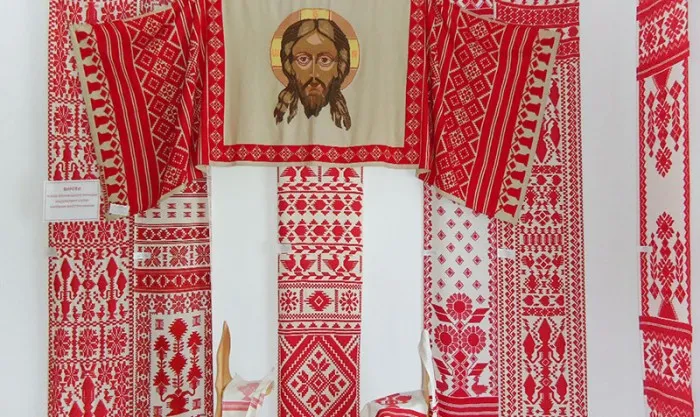
From the collections of the Museum of Krolevets weaving, M. Krolevets
Kroleveckiy towels is inherent in the strong rhythm of the fragments in the compositions, the symmetry of the image, a clear system of red shapes on a white background, alternating ornamental motifs with horizontal stripes. But because, krolevetsky towels dominated by ornamental composition over the background. White, rarely red background with heavily saturated Tcase elegant ornament.
The majority of woven products no hem, something where you can meet a few straight and zigzag bands, from which depart various forms of outlet. Meet and inscriptions, for example: "1873 month August 31st. Did P. Poor" or "G. Krolevets, etc.
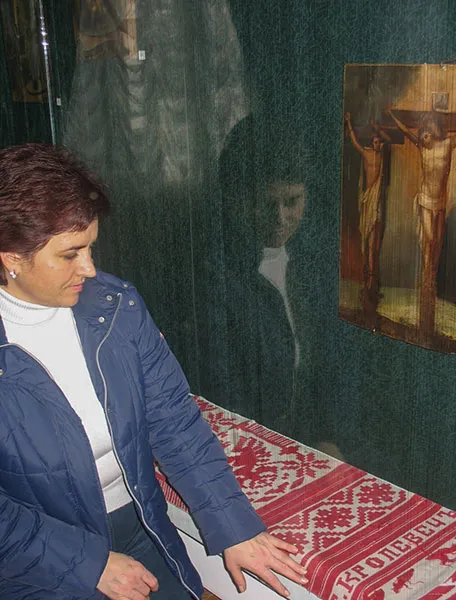
From the collections of the Museum national historical-cultural reserve "Kachanivka"

The oldest exhibit of the Museum Krolevets weaving, dated 1839 year
An important attribute of Krolevets ornamentation is "the Tree of life, symbolizing the eternal mythological and spiritual connection of the past with modern, natural phenomena with ordinary human life, which perfectly reincarnated in the image of the woman-mother – Goddess Berehynia.
Keeper on krolevetsky towels is mother nature, which is the main substance of creation, all living things, and raised up branches-hands (Orans assimilation) represent the ability to carry out a magical wave dwelt earth, displayed straight lines, is to protect, charm, harmony.
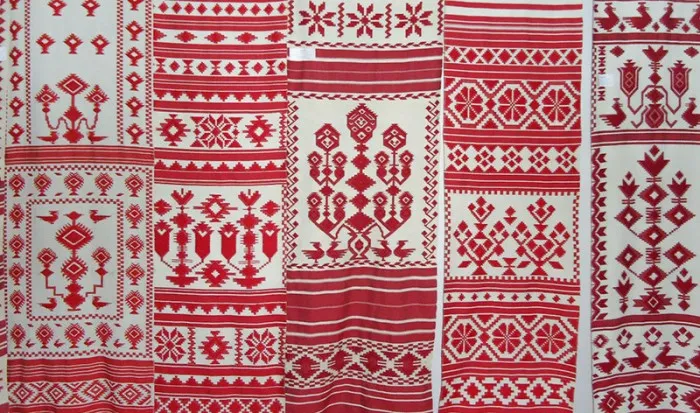
From the collections of the Museum of Krolevets weaving, M. Krolevets
Special energy message is concentrated in vosmidesyatnikov outlet, or flower, the sign of the Sun. Rhombic signs – symbols of fertility and the earth's bounty. The main ornamental load of towels is concentrated on the lower planes of the canvas and moving to the Central part graphically flowed in monumental-decorative images "Tree kind" Goddess Berehynia, eagles, cocks, monastyrok (silhouettes of the temples), wind turbines, and the like.
Our ancestors have long believed that depicting birds, ducks, cockerels (head, wings, legs), the master called to the house of happiness, well-being, affect the fertility of the land and distracted all sorts of troubles.
A special place on woven canvases was occupied by the cock, the sacred bird of the Ukrainian mythology, which symbolized respect for the God of thunder and lightning – Perun. It is the cock belonged to the mission of awakening people every day for starters day, but a new swetta. So portraying it on the towels, masters wanted a bright and happy destiny future owners of the product, and protection from evil forces.
To this day, are still under discussion associated with the image of dvuhgolosyj eagles on woven canvases.
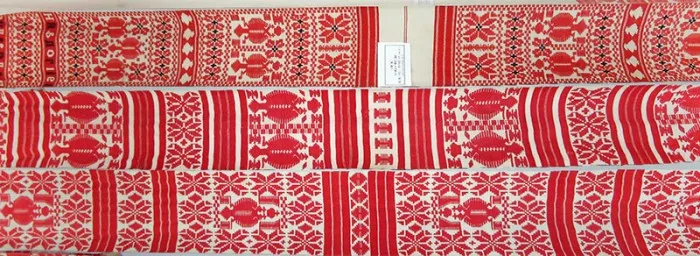
From the collections of the Museum of Krolevets weaving, M. Krolevets
Local historian A. Carp argues that this is due to the territorial identity krolevetsky uyezd, Chernigov province, the emblem of which was the eagles. Another version suggests that the mistress in this image confirms their literacy and understanding (pounding) in the Royal money that "went" in Krolevets. On coins, as on towels, eagle had a specific picture that numismatists called as "spread-eagle" (in some places, met the eagles with drooping wings as a sign of humility).

From the collections of the Museum of Krolevets weaving, M. Krolevets
However, the ethnographer and archaeologist H. Wolf interprets images of eagles on krolevetsky towels as the image synthesis of the Russian state and the Byzantine Episcopal Church of eagle. And towels and there was a part of Church utensils, this combination reflected the interpenetration of the secular and spiritual life in clothing. A. Carp is convinced that it is not necessary to project this birds on the Russian state emblem. These eagles 'flew' on towels as symbols of Episcopal services that were used during the Liturgy.
The Museum staff Krolevets weaving of Krolevets, have their position on this and explain it as a symbolic wedding ritual amulets that "orlikowski was through the combination of male and female (such a specific krolevetskoe "Yin" and "Yang"), while not forgetting to portray the birds, ducks, sun, next as the prediction of a happy family life, a successful family business.
The whole ornamental composition of towels, regardless of the nature of images in General had a comfortable decoration, which was confirmed by the harmonization of Ukrainian universe with its spiritual-sacred and commercial and economic sense of being.
Rare among old towels were such that performed a unique technique of double-sided pattern, which was called "under parks. Since the late nineteenth century. this technique is almost never used and towels have become one-sided.
A characteristic feature of krolevetsky towels is the use of traditional techniques-busting remse-Shuttle weaving.
This type of weaving associated with the introduction bogatirenko the loom, the number ramsak which sometimes reached up to 12-16.

In the Museum Krolevets weaving, M. Krolevets
In the late nineteenth century. the loom was decorated with almost every krolevetsky house. Even in Soviet times, in many rural homes in the winter have worked tirelessly to create masterpieces krolevetsky overworked during the summer, female hands.
So original-the original was a phenomenon of realization of high skill crafts, Kroleveckiy that made this region far beyond its borders.
Krolevets and Taras Shevchenko
Krolewiecka estate OSGi long been a sacred place of spiritual and educational magnetism attracts visitors from everywhere.
The whole ornamental composition of towels, regardless of the nature of images in General had a comfortable decoration, which was confirmed by the harmonization of Ukrainian universe with its spiritual-sacred and commercial

It was here on August 25-26, 1859, during his last trip to Ukraine the Great poet was visiting her sister of some of his friends of brothers Lazarevsky – Glafira Matveyevna OSK.
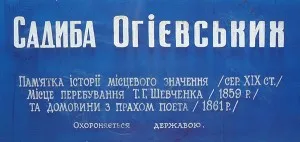
The bard was so amazed by the beauty of krolevetsky works that appealed to the well-known weaver demida kosuka of asking him weaving towel for wedding. The master made the order, but Taras was not destined to become the Holy guardian of family happiness.
Exhausted hard the trials of life, March 10, 1861 Taras died in exile. And the brothers Lazarevsky was among those closest to his heart people who are worried about a sacred poet wills.
In the night from 4 on 5 may 1861 in the manor OSGi in Krolevets stood the coffin with the body of the poet, on his way to Eternity on the way to the Chernecha mountain near Kaniv. And woven Krolevets'kyi wedding towel cover the coffin of the poet. This event is sacred is revered by locals to this day. It is symbolic that the walls of the former estate OSGi and a Museum Krolevets weaving.

International literary festival
"Krolevetskyi towels"
The value of the original Ukrainian folk art is evident in "alive", active actions promoting it. It is a return to the spiritual sources of the past and demonstrates the continuity of generations.
Kroleveckiy suggested that his original presentation tool edge, founded in the distant city life sumshchina, the literary-artistic festival "Krolevetskyi towels".
For the first time this idea was voiced by a famous poet and countryman Mikhail Shevchenko, who in may 1993, together with members of the international Shevchenko festival "the family freestyle, new..." visited his small home – the last place of stay in Ukraine of the Ukrainian genius of the Prophet.
Thoughtfully, wisely was receptive to the idea of regional power, knowing that to hold the festival in the cold, a poor, darkened, in the literal sense of the word, Calefaccin was hard and responsibly. The harmony of beauty and labour and prompted the festival organizers hold art festival under this name in the autumn, for completion of all field work: on the eve of the professional holiday of agricultural workers (celebrated in November) in order to celebrate the tireless work krolevetsky workers-farmers and to launch a season of hard work by local original masters.
Despite all the turmoil, in November 1995, successfully launched the First all-Ukrainian literary-art festival "Krolevetskyi towels". Since 2000, the festival has received state support: it was included in the basic plan of cultural and artistic events of the Ministry of culture of Ukraine. And the highest recognition earned in 2007, when the festival awarded the international status.
A variety of ornamental image krolevetsky towels if given a jolt multi-genre artistic performance of the participants of the festival: masterly performance of Opera roles, cabaret performances, choreography, original performance poetry, a variety of exhibitions, creative laboratories and master classes, literary evenings, meetings with outstanding personalities. From year to year on the wings of songs rushes away high art, which celebrates the native language, work, spiritual and ethnographic traditions, brings together creative people from all over the world.
Valuable achievement of the festival performances always rural Amateur art groups that in songs, poetic works, choreographic compositions convey a friendly image of the Polesie farmer-worker and highly spiritual personality.
Festival in Krolevets is first and foremost a proper commitment to the traditions that live here and are passed on from year to year, from generation to generation. A special place in the days of high art is events commemorating the great genius of the Ukrainian people Taras Shevchenko.
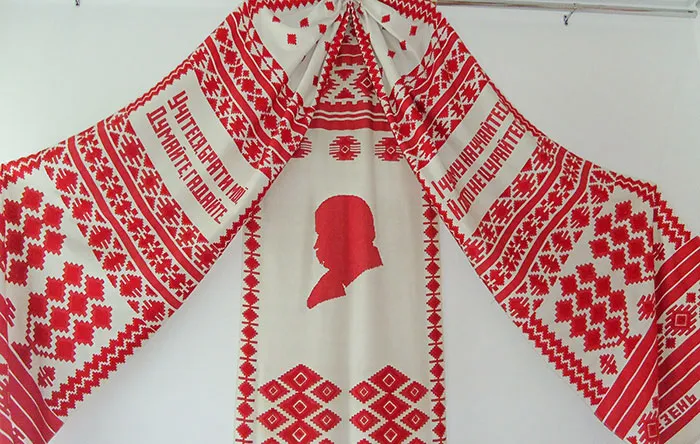
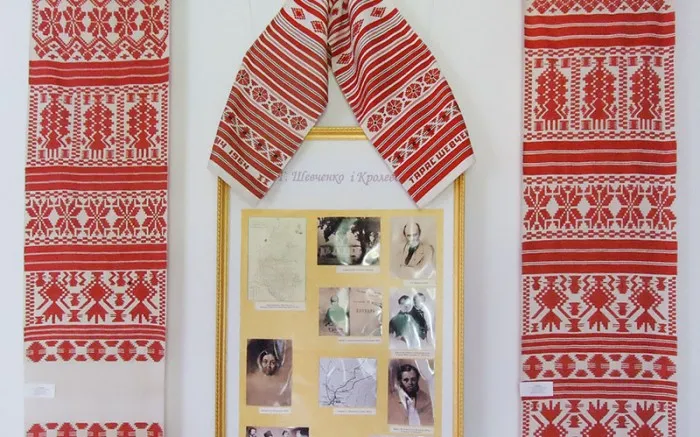
Polesie, the town is proud of its land knew his breathing and pace, divided with him the last days of stay in Ukraine and escorted to Eternity.

And so, remembering Shevchenko, near the monument and the Museum is always crowded: sound speech, read poems, the last colors of autumn are full of flowers. So: not dead, not snimalas in the years of the total Russification in the most remote corners of Ukraine nor the eternal word of the poet, nor the strength of the Ukrainian spirit, nor glory, nor will...
A significant event of the festival is always a celebration of Deprivation literary festival – individual or team, thereby focusing on a special ornamental art the image on the towels and glorifying the Ukrainian woman-Bereginya.
In 2015, the 20th anniversary festival it has become a well-known theater and film actress Ada Rogovtseva. Her fragile, courageous shoulders were the white-Krolevets red wings woven towel. And in a solemn moment of greeting seemed that she Ada Nikolaevna was like a gentle bird. So countrymen honored her maternal loyalty, devotion to the Ukrainian people and his native Sumy!
In recent years, deserve the recognition of their fans ' costumes from the regional and local designers who successfully use all the flavor and originality of the original local embroidery. The harmonious combination of red and white flowers, expressive color complements ethnographic literary festival.
So, on the artistic map of Ukraine with its own historical and ethnographic sprouted painting original the tree of the manifestation of the national spirit, the original national phenomenon kroleveckiy towels.
But in order to preserve the original tradition of weaving should now put a lot of effort because the Utility "Krolevetskoe artistic weaving" of the powerful firm to a non-functional object. Suspended temporarily the recruitment for weaving specialty and Krolevetskoe higher professional school.
Now the tradition of weaving Krolevets towel to protect his fragile hands a few weavers (less than a dozen) who work at home, and College graduates.
Therefore, we believe that the ancient traditions of fishing and weaving in Kralevich continue and multiply future generations. And unique colors and ornamental images of Krolevets rushnyk will be recognized in Ukraine and worldwide, due to its uniqueness, uniqueness and identity.